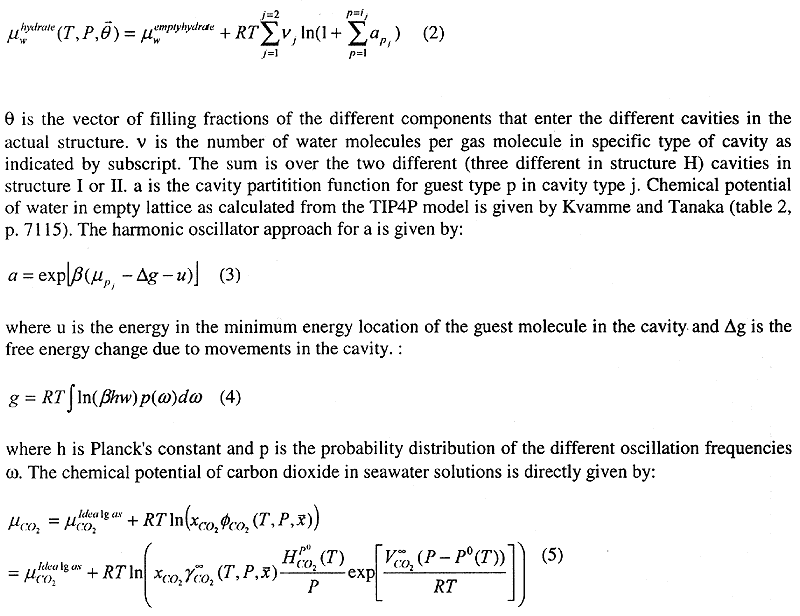Poynting corrections are applied using a constant density equal to the experimentally measured liquid density at 1 bar and the actual temperature. Activity coefficients are calculated using the NRTL-electrolyte equation (Chen and Evans(1986)). Model parameters for carbon dioxide and it's dissociation products are taken from Posey and Rochelle (1997). Model parameters involving sodium and chloride are fitted against experimental solubilities of carbon dioxide in seawater at comparable conditions using the experimental data of Stewart and Munjal (1970).
The CO2 molecule is a fairly large molecule compared to the size of the large cavity in structure I. The corresponding destabilization of the water lattice due to the motion of guest molecules in the cavity may be in the order of 1 kJ/mole at 3 degrees Celsius (Kvamme (1995)). We therefore use the harmonic oscillator approach for calculation of effects of the guest water interactions on the stability of the hydrate. Chemical potential of water in the hydrate phase may be derived from the grand canonical ensemble in statistical mechanics. The final result is (Kvamme and Tanaka (1995)): at the actual condition.

where x now is mole fraction in gas or liquid phase and φ is the corresponding fugacity coefficient. The first right hand side formulation is the most appropriate for pure carbon dioxide phase and carbon dioxide hydrate formed from a mixed gas. The second formulation on the right hand side is a straightforward rewriting using the equality between the excess and residual formulations of chemical potentials. Infinite symbol denotes infinite dilution, V is partial molar volume of CO2 at infinite dilution in water (set constant to 33.10-6 m3/mole (Reid at. al. (1987)). P0 is the vapor pressure of water at the actual condition.